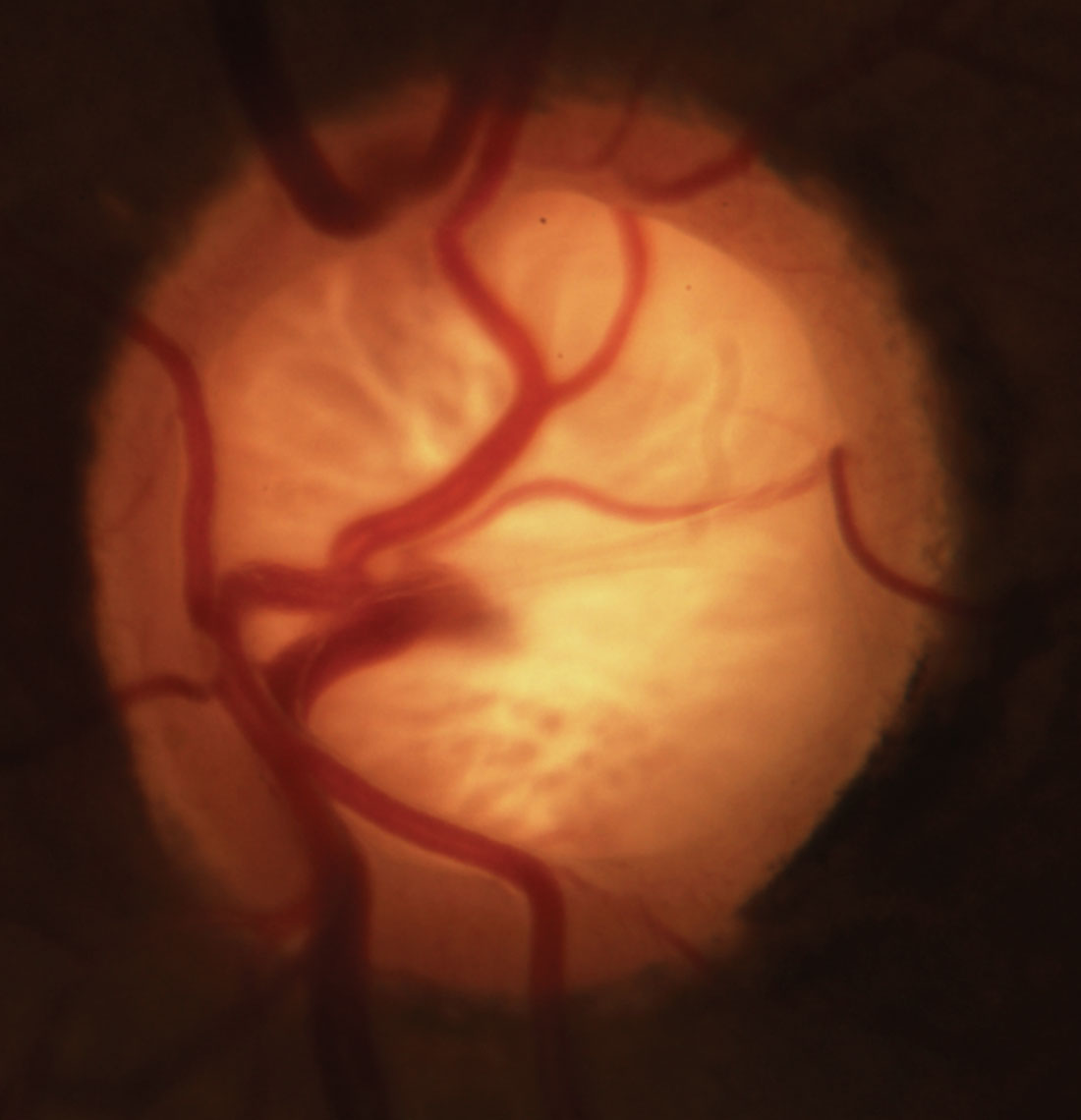 |
| High blood pressure increases risk of open-angle glaucoma. Photo: Michael Dorkowski, OD. Click image to enlarge. |
To assess the relationship between blood pressure (BP) and glaucoma, and learn whether or not medications play a part, researchers recently conducted a retrospective cohort study of an NIH national EHR database. They pointed out that the program is uniquely suited to studying glaucoma risk factors, as it offers comprehensive, longitudinal health information for more than a quarter of a million patients in the country. They included patients with at least 15 months of follow-up and one BP measurement.
A total of 20,815 eye patients qualified for the study; of these, 462 developed OAG. The researchers reported that low BP, defined as mean arterial pressure (MAP) lower than 83mm Hg, was associated with an increased risk of developing OAG. High BP (MAP >101.3mm Hg) and the number of BP medication classes, on the other hand, weren’t associated with OAG after the researchers adjusted for covariates.
They also reported elevated risk among those who were Black, Hispanic, Latino, Asian, older and/or diabetic. Additionally, female sex was associated with a decreased risk of OAG development. They noted no significant interaction between arterial pressure and the number of BP medications on the risk of OAG development.
The researchers noted that though mean MAP didn’t differ significantly between patients who developed OAG and those who didn’t, its effect on OAG development was significant after controlling for confounding factors. “Increasing number of BP medication classes appeared to be associated with increased hazard of developing OAG until other factors were adjusted for in multivariable regression,” they said. “These results suggest that all other factors being equal, lower BP is associated with increased risk of developing incident OAG.”
Other studies, such as the Rotterdam study, Egna-Neumarkt Study and Beaver Dam Eye study, have noted a positive association between hypertension and increased IOP, but they haven’t demonstrated a corresponding increase in or development of OAG. “These studies were cross-sectional in design and couldn’t measure the risk of developing incident OAG,” the researchers noted in their paper, published in Ophthalmology. “Furthermore, these studies were composed of ethnically homogenous populations, so it’s unclear if their results can be broadly extrapolated to the general population.”
Consistent with their study’s findings, several longitudinal, population-based studies have identified an association between low BP and increased risk of OAG. These include the four- and nine-year follow-up data of the Barbados Incidence Study of Eye Diseases, which initially found a positive correlation with systolic BP and increased IOP, but upon further analysis of systemic hypertension, the study noted a negative association between hypertension and risk of OAG development. Also, the Early Manifest Glaucoma Trial, whose 11-year follow-up data showed that higher systolic BP (>160mm Hg) was protective against OAG progression.
“Like the present study, the design of these previous longitudinal studies allows the measurement of incident glaucoma and identification of risk factors for incident glaucoma,” the researchers explained. Their results expand on the literature that points to systemic hypotension as a risk factor for incident OAG development.
Additionally, the researchers pointed out that this study is the first to examine the difference between therapeutically low and naturally low BP on risk of OAG development. “Since no significant interaction was identified between MAP and the number of BP medication classes on development of OAG, we didn’t find that low BP due to BP medication use confers different risk of developing OAG compared with naturally low BP.”
“Like previous epidemiological studies, the associations described in this study don't provide conclusive evidence with regard to causation of glaucomatous disease but rather add to the evidence supporting vascular risk factors as possible contributors to OAG pathogenesis,” they continued. “In the vascular dysregulation hypothesis of OAG, the relationships between BP, IOP and ocular perfusion pressure are implicated in adversely impacting ocular blood flow and thus damaging the optic nerve.”
The researchers stressed that although BP is a modifiable risk factor, the findings of their study “should by no means lead to a broad reduction in the treatment of hypertension in an effort to reduce glaucoma risk. The associated risk of incident OAG with hypotension, while statistically significant, would not likely outweigh the risks of uncontrolled hypertension. Further confirmation including a better understanding of the pathophysiology of OAG is necessary before adjustment of hypertension management for OAG prophylaxis can be considered.”
Lee EB, Wendeng H, Singh K, et al. The association between blood pressure, blood pressure medications, and glaucoma in a nationwide electronic health records database. Ophthalmology. October 21, 2021. [Epub ahead of print]. |

